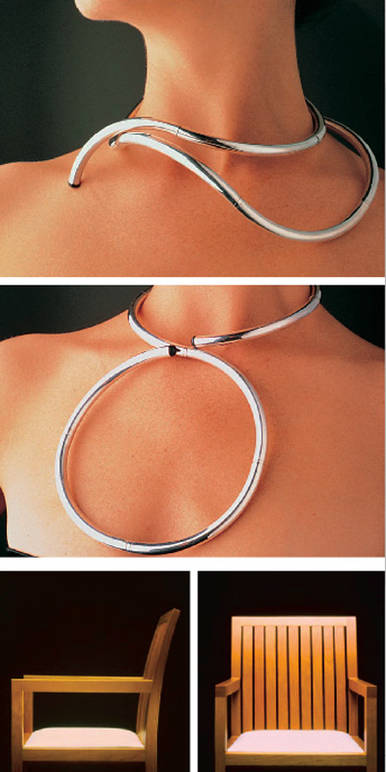Addio Lella Vignelli. Legendary Designer
This book is dedicated to Lella Vignelli, an inspiration to all women designers who forcefully stand on the power of their merits.” So begins this excellent book just published in electronic format (You may download it at www.vignelli.com).
Massimo Vignelli’s tender and intimate dedication carries through the entire book, which takes you into the world of the couple and immerses you in their work, their way of thinking, not only in the story of the designs they have been creating over the last half- century, but also in a lifestyle and ethic of great discipline and responsibility. Page by page, the book becomes a manifesto of style, full of intellectual honesty and intelligence.
A call to arms
The intensity of Vignelli’s dedication is important for one to understand the book fully; it contains a fierce yet coolheaded call to arms. For years, writes Massimo Vignelli, the collaboration between female architects and designers and their partners has been underappreciated. The creativity and influence of women was not accepted, and often their contribution was ndervalued if not completely ignored. This was the case even with the most famous partnerships: Mies van der Rohe and Lilly Reich, Le Corbusier and Charlotte Perriand, Alvar and Aino Aalto, and Charles and Ray Eames.
“Female architects have often been relegated—by assumptions, by the media, by ignorance or arrogance—to supporting roles, even when they shared the position of partner,” says Vignelli. Little seems to have changed to this day. A recent article in Architectural Record noted that even though women make up 40% of all architecture majors in America today, they represent only 17% of the work force in major architectural firms.
Of course there have been multiple recognitions for women in recent years. In 2013 the Museum of Modern Art held the exhibition “Designing Modern Women: 1890-1990” in which they noted “modern design of the twentieth century was profoundly shaped and enhanced by the creativity of women.”
Macho attitudes
“The supporting role of the woman architect has often been created by the macho attitudes of her male partner” writes Massimo Vignelli. “Most of the glory went to the men (not accidentally) while the women, as partner architects, found that their role was dismissed or totally ignored.” He has always wanted to create a brand that presented the couple together. But it wasn’t always easy: “For years our office sent our work to magazines properly credited. For years they only gave me the credit.”
Many projects in the book were begun and completed by Lella herself, and she collaborated closely on others. Lella often said, “Massimo is the dreamer, I am the realist. He flies high, and sometimes I have to pull him down....”
Their collaboration, their similar understanding and approach to design, has been extraordinary. But it hasn’t been without its hiccups. “We had complete trust in each other’s judgment, even if sometimes the discussions were quite animated,” says Vignelli of Lella. In our opinion, such openness reveals their humanity.
“Both of us despise obsolescence in design; we consider it an irresponsible attitude toward the user and toward society. We detest a wasteful culture based on greed, we detest the exploitation of the consumer and of resources; we see this as an immoral attitude,” continues Vignelli. “Lella’s sensibility toward natural materials, textures, and colors is quite apparent in her work: Linen, wool, silk, woods, silver are often the foundation of her creative palette. Her clothing design also reflected the same approach, based on sober values and thoughtful intelligence. Lella’s work, as her life, has been a fantastic blend of logic and playfulness, spirit and pragmatism, down-to-earth logic and idealistic vision.”
The book provides a dense, yet minimalist portrait of their story, with pictures of their work dating from 1964 till today. The book divides their work, in Italy and America, into several chapters: “Furniture Design,” “Interior Design,” “Exhibition and Showroom Design,” “Product Design: Glass, China, Silver,” and “Clothing Design.” There you have it: Lella and Massimo Vignelli, partners, lovers, and husband and wife for over half a century.
A role model for all women
“Her personality has made her a role model for all women,” writes Massimo. On the last page, with a black background, is a close-up of Lella wearing a 17th century inspired necklace she designed. “Here, Lella is modeling her necklace. We have often said that the problem with some designers is that they play with the appearance of things rather than getting at their essence. Lella has been consistent throughout her career: she is unfailingly intelligent; rigorous, not arbitrary; timeless, not trendy. She is an inspiration.”
Her inspiration has infected contemporary design and united this singular couple. “Design is one,” says one of their slogans. “If one knows how to design one thing, one can design everything.” But in their book design also takes two.










































i-Italy
Facebook
Google+
This work may not be reproduced, in whole or in part, without prior written permission.
Questo lavoro non può essere riprodotto, in tutto o in parte, senza permesso scritto.